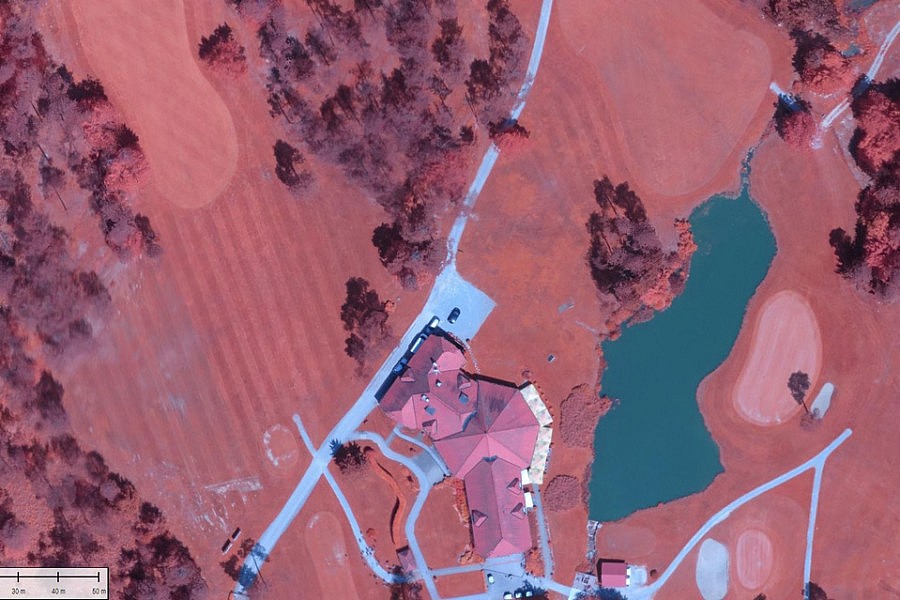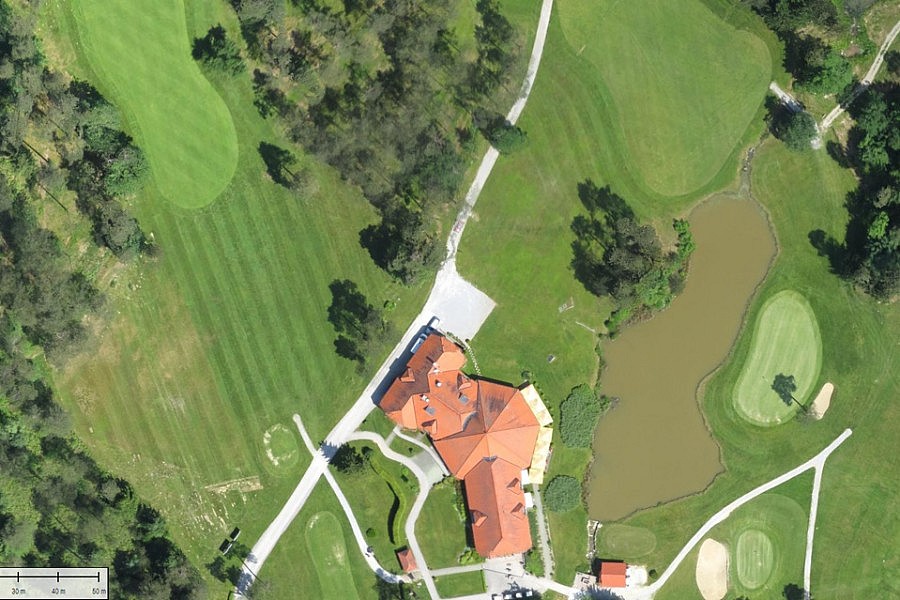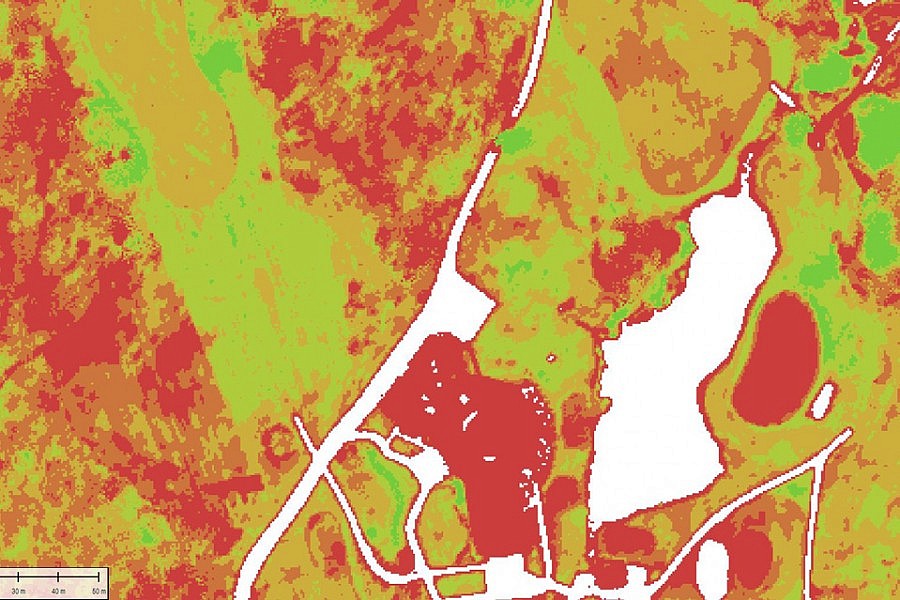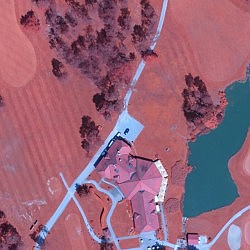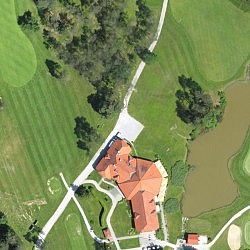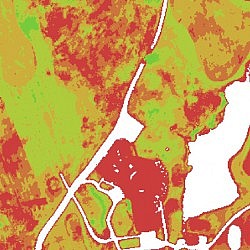Arboretum Golf Course is constantly striving to maintain the high quality of lawns on the pitch, since this is the only way to provide to its clients the game and entertainment at the highest level. The quality of the course reflects also in the health of the lawns. Arboretum Golf Course aims to optimize and correctly asses the quantity of fertilizers and pesticides needed to grow the utmost quality sports lawn surface and minimize the pollution of soil with chemical substances. For this purpose, they turned to the company Geavis to carry out the so-called analysis of the lawn vegetation stress on the golf course.
Causes of vegetation stress can vary from soil depletion, drought, diseases, and infestation with pests. The level of vegetation stress is determined by measuring the vegetation index NDVI (normalized difference vegetation index), which is a good indicator of vegetation biophysical characteristics and health.
The vegetation index NDVI is calculated as the ration between the fallen and reflected light in red and infrared portion of electromagnetic spectrum. The NDVI distinguishes green vegetation from other areas because chlorophyll absorbs the red portion of the spectrum and reflects its near infrared portion because of the leaf internal structure. Therefore, high NDVI values indicate a large leaf area, high leaf biomass and the continuity of the treetops – and thus reflect the good health and vitality of vegetation. Low values of NDVI point to poor lushness of green areas, which is a result of vegetation stress.
Aerial photography as well as further processing and analysis of aerial photographs were carried out by the company Geavis. In two flights, we took aerial photographs of the area of golf courses and made 250 RBG and 250 NIR high-resolution aerial photographs.
By processing of stereopairs of aerial photographs, we created a point cloud with a density of 20-50 points/m2. The obtained metric and raster 3D terrain model was then filtered and the surfaces were stretched, so that a digital terrain model DTM was created. The latter was then used as a basis for the georeferencial orthophoto mosaics, both infra-red and red mosaic with a resolution of 10 cm/px. On the infrared orthophoto mosaic, an algorithm was used to calculate the NDVI index and thus the reflectance map of the golf course was created. The good thing about using NDVI vegetation index is that it allows for easy interpretation, since areas with green vegetation as well as those with brown or lack of vegetation can be easily recognized.
- Location: Arboretum golf course, Slovenia
- Area size: 156 ha
- Number of flights: 2
- Total flight time: 1h
- Aerial photo resolution: 6.5 cm/px
- Display of areas of vegetation lushness:
- White: lack of vegetation
- Yellow, green: poor vegetation
- Red: good vegetation

